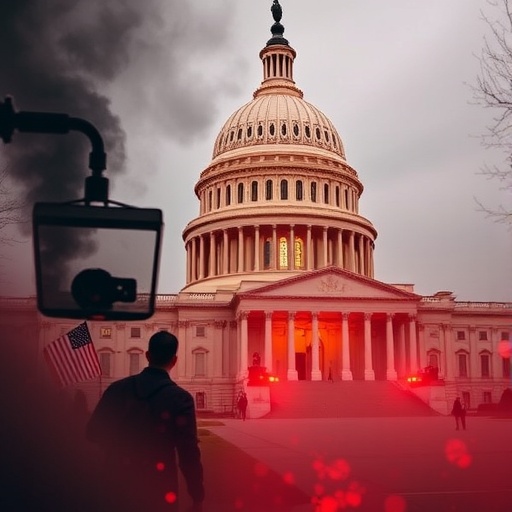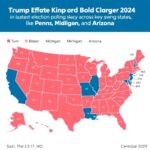As the clock ticks down to a midnight deadline, Congress in Washington is locked in a high-stakes budget standoff that could trigger a government shutdown, disrupting everything from national parks to federal paychecks for millions of Americans. With partisan lines drawn deeper than ever, lawmakers are scrambling to forge a deal amid accusations of fiscal irresponsibility flying across the Capitol aisles.
The crisis stems from irreconcilable differences over spending priorities in a proposed $1.7 trillion omnibus budget bill, where Republicans demand steep cuts to social programs and Democrats push for increased funding in healthcare and infrastructure. This isn’t just political theater; the potential shutdown looms as a real threat to essential services, echoing past disruptions that cost the economy billions. Sources close to the negotiations reveal that talks have stretched into the early hours, with no resolution in sight as of late Thursday.
Partisan Fault Lines Deepen in Budget Negotiations
In the marbled halls of Washington, the budget battle has exposed raw partisan divisions that have plagued Congress for months. Republicans, led by House Speaker Mike Johnson, argue that unchecked spending is fueling inflation and ballooning the national debt, which now exceeds $34 trillion. ‘We cannot continue down this path of fiscal recklessness,’ Johnson declared during a fiery press conference earlier this week, emphasizing the need for at least $100 billion in cuts to discretionary spending.
On the other side, Senate Majority Leader Chuck Schumer has accused the GOP of playing ‘shutdown roulette’ with American lives, pointing to the inclusion of billions for veterans’ benefits and disaster relief in the Democratic counterproposal. ‘This isn’t about party; it’s about protecting the services that families rely on,’ Schumer stated, underscoring the partisan politics at play. The standoff intensified when conservative hardliners in the House Freedom Caucus refused to back a compromise bill, demanding concessions on border security funding—a non-budget issue that has hijacked the talks.
Historical context adds weight to the urgency. The last government shutdown in 2018-2019 lasted 35 days, the longest in U.S. history, and resulted in $11 billion in lost economic output, according to the Congressional Budget Office. This time, with inflation still hovering at 3.2% and midterm elections on the horizon, the stakes feel even higher. Lobbyists from industries like tourism and defense are flooding Capitol Hill, urging swift action to prevent disruptions that could ripple through supply chains and consumer confidence.
Behind closed doors, informal caucuses have been meeting non-stop. A senior Democratic aide revealed that a ‘gang of six’—three from each party—has been drafting a potential bridge bill, but progress is stymied by veto threats from the White House over immigration provisions tacked onto the budget. As negotiations drag on, the pressure mounts, with procedural votes scheduled for Friday morning that could force a vote on a short-term funding extension, buying time but not resolving the underlying budget impasse.
Essential Services on the Brink: What a Shutdown Would Entail
A government shutdown isn’t a vague threat—it’s a tangible crisis that halts non-essential federal operations, furloughing over 2 million civilian employees and stalling payments for critical programs. In Washington, the politics of the moment mask the human cost: national parks would close, IRS tax refunds could delay, and food safety inspections might grind to a halt. The Department of Homeland Security estimates that border patrol operations would continue, but at reduced capacity, potentially exacerbating immigration debates.
Economists warn of broader impacts. A Government Accountability Office report from previous shutdowns projects that even a week-long closure could shave 0.2% off GDP growth, translating to $6 billion in losses for a week in today’s economy. Small businesses, particularly those dependent on federal contracts, stand to suffer most. For instance, Virginia-based firms supplying the Pentagon could face immediate cash flow crises, as seen in 2013 when over 800,000 workers were furloughed.
Quote from a federal employee union leader: ‘Our members are anxious; paychecks are lifelines, not bargaining chips,’ said Everett Kelley, president of the American Federation of Government Employees. Veterans’ groups are particularly vocal, with the Disabled American Veterans highlighting that disability claims processing could backlog by thousands, delaying support for those who served.
Statistics paint a stark picture: During the 2018 shutdown, suicide hotlines saw increased calls from affected workers, and child nutrition programs like WIC faced funding shortfalls serving 6.5 million low-income families. In this round of budget wrangling, similar vulnerabilities loom, especially with ongoing recovery from natural disasters like Hurricane Helene, where FEMA’s response could be hampered without full appropriations.
The ripple effects extend to global markets. Wall Street analysts note that prolonged uncertainty could spook investors, with the Dow Jones already dipping 1.2% this week on shutdown fears. International allies, watching Washington’s dysfunction, question U.S. reliability in trade and defense pacts, adding a layer of geopolitical tension to the domestic politics.
Key Lawmakers Step Up in the Shutdown Showdown
Spotlight falls on pivotal figures steering this budget tempest. House Speaker Mike Johnson, a relative newcomer to leadership, faces his first major test, balancing Tea Party conservatives with moderate Republicans wary of electoral backlash. Johnson’s strategy involves leveraging the slim GOP majority to extract concessions, but insiders say he’s open to a clean continuing resolution if Democrats bend on green energy subsidies.
Senate Minority Leader Mitch McConnell, ever the dealmaker, has been quietly mediating, drawing on his experience from averting shutdowns in 2021. ‘We’ve been here before; cooler heads must prevail,’ McConnell remarked in a rare floor speech, alluding to the need for bipartisanship in Washington politics. His influence could sway wavering senators, particularly in red states where federal jobs are economic anchors.
From the Democratic side, House Minority Leader Hakeem Jeffries is rallying progressives, who view the budget as a chance to embed climate initiatives. Jeffries has coordinated with the Biden administration, where Treasury Secretary Janet Yellen warned Congress that a shutdown would undermine efforts to stabilize post-pandemic recovery. ‘This is not the time for games,’ Yellen said in a letter to lawmakers, citing rising interest rates as a direct consequence of fiscal gridlock.
Emerging voices include moderate senators like Susan Collins (R-ME) and Joe Manchin (I-WV), who co-sponsored a bipartisan infrastructure addendum to the budget. Their efforts highlight fractures within parties: Collins faces pressure from Maine’s tourism sector, while Manchin’s coal-state roots make him a swing vote on energy funding. Quotes from these players add color: ‘We need compromise, not confrontation,’ Collins urged, emphasizing the human element in politics.
External influencers, like the U.S. Chamber of Commerce, have lobbied aggressively, releasing a statement that a shutdown would cost 1.1 million private-sector jobs indirectly. This chorus of stakeholders underscores how Congress’s budget decisions reverberate far beyond Washington, influencing everyday American lives.
Lessons from Past Shutdowns Fuel Urgent Reforms
Looking back, Congress’s history with government shutdowns offers sobering lessons that are now front and center in this budget crisis. Since 1976, there have been 20 partial shutdowns, but the 1995-1996 and 2018-2019 episodes stand out for their duration and damage. In 1995, under President Clinton, two shutdowns totaling 28 days stemmed from welfare reform disputes, costing $1.4 billion and eroding public trust in government.
The 2018 shutdown, tied to border wall funding, furloughed 380,000 workers and delayed $10 billion in economic activity, per the Council of Economic Advisers. It also politicized the issue, with approval ratings for Congress plummeting to 18%. These precedents are being invoked daily in Washington debates, with Democrats warning of voter backlash and Republicans framing it as necessary fiscal discipline.
Reform proposals are gaining traction amid the chaos. Bipartisan bills like the No Budget, No Pay Act aim to withhold lawmakers’ salaries during shutdowns, a measure supported by 78% of Americans in recent polls by Pew Research. Additionally, calls for automatic continuing resolutions—short-term funding bridges—could prevent future crises, though entrenched politics make passage unlikely soon.
Experts like Maya MacGuineas of the Committee for a Responsible Federal Budget argue that structural changes are essential. ‘Congress must move beyond short-term fixes to a sustainable budget framework,’ she said, noting that the current impasse reflects deeper issues like earmark bans and procedural gridlock. As this shutdown threat unfolds, these historical echoes serve as a cautionary tale, pushing lawmakers toward innovation in how they handle Washington’s perennial budget battles.
Forward-looking, the path ahead hinges on weekend sessions if no deal materializes by Friday. Analysts predict a last-minute compromise, perhaps a three-month funding patch, but warn that unresolved debt ceiling talks in early 2024 could reignite the fire. For Americans, the implications are clear: stability in federal services depends on Congress bridging its divides, ensuring that politics doesn’t derail progress. With eyes on the 2024 elections, this standoff could redefine voter priorities, pressuring lawmakers to prioritize governance over gridlock.








